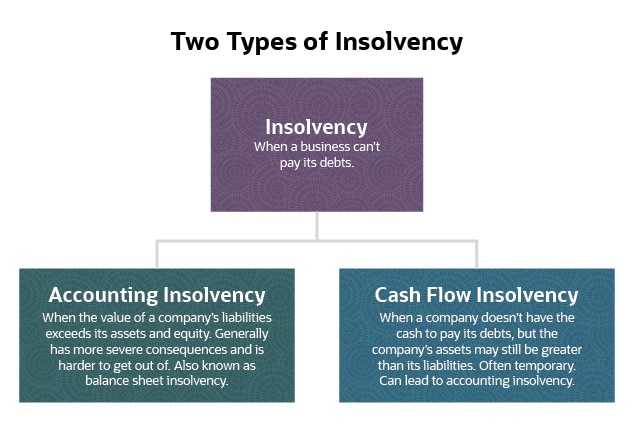All About Insolvency Practitioner
All About Insolvency Practitioner
Blog Article
The Of Insolvency Practitioner
Table of ContentsNot known Details About Insolvency Practitioner More About Insolvency PractitionerInsolvency Practitioner - The FactsLittle Known Facts About Insolvency Practitioner.Not known Details About Insolvency Practitioner Not known Details About Insolvency Practitioner The Facts About Insolvency Practitioner Uncovered
Insurance is monitored and regulated by state insurance departments, and among their main purposes is protecting policyholders from the risk of a firm in monetary distress. When a company gets in a duration of monetary problem and is incapable to fulfill its commitments, the insurance policy commissioner in the firm's home state launches a processdictated by the laws of the statewhereby initiatives are made to aid the company reclaim its financial footing.If it is figured out that the business can not be refurbished, the firm is proclaimed financially troubled, and the commissioner will ask the state court to buy the liquidation of the business. The insurance commissioner, either designated by the governor or elected, heads the state insurance policy division and displays and regulates insurance policy task within the state.
By acquiring control of a firm, the commissioner (or the insurance coverage department) is, by law, the rehabilitator or liquidator of the business. In this capability, the commissioner or division takes control of the firm's operations. Rather than do so directly, the commissioner may retain a special deputy receiver to monitor the company's activities.
An Unbiased View of Insolvency Practitioner
The receiver manages an accounting of the business's properties and responsibilities and carries out the estate of the firm. In doing so, the receiver seeks to optimize the business's possessions, transfer them to cash money, and after that disperse that cash to lenders having legitimate claims versus the insurance company according to payment top priorities defined by state law (in all states, insurance holders are priority plaintiffs whose insurance claims are paid prior to those of basic financial institutions).
All insurance coverage firms (with minimal exceptions) certified to market life or wellness insurance or annuities in a state should be participants of that state's guaranty organization. The warranty organization coordinates with the commissioner and the receiver in pre-liquidation planning. Once the liquidation is bought, the guaranty association provides insurance coverage to the business's policyholders who are state citizens (up to the degrees specified by state lawssee listed below; any type of advantage quantities above the warranty asociation advantage degrees become cases against the business's staying properties).
Indicators on Insolvency Practitioner You Need To Know
The above coverage degrees use separately for each financially troubled insurer. [Back] When an insurer falls short and there is a shortfall of funds needed to fulfill the commitments to insurance policy holders, state warranty associations are triggered. Guaranty organizations have two primary sources of financing when giving protection to policyholders. First, guaranty organizations have subrogation legal rights to an in proportion share of the properties staying in the failed insurance provider.
Second, insurers doing company in that state are examined a share of the amount required to fulfill the section of the warranty associations' covered claims not otherwise funded with estate assets. The quantity insurance providers are examined is based on the quantity of costs that they gather because state. [Back] The National Company of Life and Medical Insurance Guaranty Organizations (NOLHGA) is composed of the life and health and wellness insurance warranty associations of all 50 states and the District of Columbia.
NOLHGA develops a task force of representative guaranty associations to collaborate with the insurance coverage commissioner to create a plan to secure insurance holders. For additional information on NOLHGA's function at the same time, see "What Is NOLHGA?" and "The Safeguard at Work." [Back]
Insolvency Practitioner Fundamentals Explained
:max_bytes(150000):strip_icc()/insolvency.asp-final-15cb186ac9544f8a9b12416af2478ad8.jpg)
Predictive security by assisting you choose the best customers and the appropriate markets to avoid uncollectable loan in the very first location, many thanks to acute financial evaluation. Thorough market knowledge, providing you with 360-degree visibility on business article sectors and impending problems. It would certainly be a simplification to think a trade credit scores insurance starts and finishes with costs and pay-outs.

The Of Insolvency Practitioner
Why does a firm enter into insolvency? There are a number of factors why a firm may get in into insolvency.
Various other factors for bankruptcy include scams, mismanagement, and unanticipated expenses. When a business ends up being insolvent, its possessions are used to repay its debts. This can have a significant effect on business, as it might no much longer be able to continue operating. Insolvency can additionally result in task losses and the closure of businesses.
The Ultimate Guide To Insolvency Practitioner
The firm might be forced to offer properties, lay off personnel or even close down. Financial institutions might be left out of pocket and the company's investors might see their investment disappear.
This can take place for a number of factors, including poor economic management, unforeseen prices, or a modification on the market. If a business is bankrupt, it may be required to close down or market off properties to pay lenders. see This can have a significant influence on business, workers, and shareholders.
It can result in work losses, possession sales, and also personal bankruptcy. It is essential to understand exactly how company insolvency works and just how it can influence your organization. Why does a firm get in into bankruptcy? There are a number of factors why a business might enter right into bankruptcy. One of the most common reason is that the business is not able to pay its financial obligations as they drop due.
The Definitive Guide for Insolvency Practitioner
Various other reasons for bankruptcy consist this website of fraud, mismanagement, and unforeseen costs. Bankruptcy can additionally lead to task losses and the closure of businesses.
The business may be required to offer possessions, lay off personnel or also shut down. Lenders may be left out of pocket and the business's investors might see their investment disappear.
Report this page